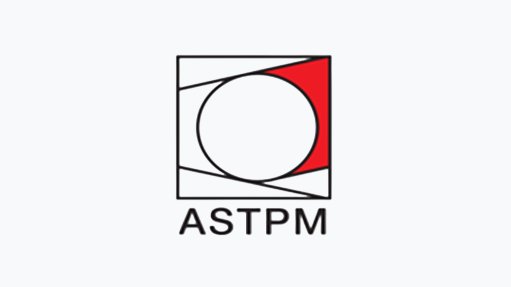S&P upgrades Sasol to 'BB+' on debt reduction; outlook stable
Chemicals company Sasol’s funds from operations- (FFO-) to-debt improved to 54% in the financial year ended June 30, following the company’s efforts to deleverage by using asset disposal proceeds to reduce gross debt. Cash flow generation improved – supported by supportive commodity prices and improved operating efficiency.
Ratings agency S&P Global Ratings says it anticipates strong earnings in Sasol’s fuels segment, thanks to strong Brent crude oil prices, to offset the near-term headwinds in its chemical segments and allow the company to generate FFO-to-debt above 45% on average.
S&P has therefore raised its long-term issuer credit rating and issue rating on Sasol and its debt to 'BB+' from 'BB' and affirmed its 'B' short-term rating.
The stable outlook reflects that recent debt reduction and supportive oil prices will offset near-term headwinds and allow Sasol to maintain FFO to debt above 45% on average in the coming years.
The improvement in credit metrics is supported by a gross debt reduction using asset disposal proceeds, improvements in operating efficiency, and supportive market conditions, S&P indicates.
As noted, Sasol’s FFO-to-debt improved to 54% in the 2022 financial year, ahead of its previous expectation of about 42%, from 36% in the 2021 financial year.
Based on S&P’s revised forecasts, it now expects FFO-to-debt above 45% through the cycle.
The recovery in Sasol’s credit metrics was supported by a combination of asset disposals (about South African R56-billion since 2020, with proceeds mainly used for debt repayment); a recovery in global oil and chemicals prices; and the implementation of cash preservation strategies that included a cut-back on capital expenditure (capex).
These factors allowed Sasol to reduce its gross debt from about R190-billion in the 2020 financial year to R105-billion in the 2022 financial year.
The ratings upgrade reflects its expectation that Sasol will maintain stronger credit metrics over the next few years, supported by its gross debt reduction.
S&P expects this will enhance the group’s resilience to future periods of lower oil and chemical prices. It expects Sasol to deliver earnings before interest, taxes, depreciation and amortisation (Ebitda) of R79-billion in the 2023 financial year, and Ebitda close to R55-billion under its long-term oil price assumption of $55/bl.
Both oil and chemical prices and the dollar:rand exchange rate are highly volatile, and Sasol’s Ebitda will be sensitive to changes in these, S&P points out. However, it expects less sensitivity in credit metrics following Sasol’s reduction of gross debt.
S&P expects that supportive oil prices will offset headwinds in its chemical businesses in the near term.
It notes that a prudent financial policy remains key to maintaining rating headroom.
S&P says it sees any improvement in Sasol’s business profile assessment within the satisfactory category as dependent on the continued ramp-up of its US-based Lake Charles Chemicals Project.
The ratings on Sasol are not currently capped by S&P’s long-term foreign currency sovereign rating on South Africa.
S&P could lower the rating if FFO-to-debt falls below 30%.
A positive rating action would hinge on a combination of the weighted average FFO-to-debt remaining above 45%, with at least adequate liquidity, continued improvement in operating efficiency metrics, and an upgrade of South Africa's foreign currency sovereign rating.
Environmental factors are a negative consideration in S&P’s credit rating analysis of Sasol, which it views as having elevated exposure relative to industry peers.
Article Enquiry
Email Article
Save Article
Feedback
To advertise email advertising@creamermedia.co.za or click here
Comments
Press Office
Announcements
What's On
Subscribe to improve your user experience...
Option 1 (equivalent of R125 a month):
Receive a weekly copy of Creamer Media's Engineering News & Mining Weekly magazine
(print copy for those in South Africa and e-magazine for those outside of South Africa)
Receive daily email newsletters
Access to full search results
Access archive of magazine back copies
Access to Projects in Progress
Access to ONE Research Report of your choice in PDF format
Option 2 (equivalent of R375 a month):
All benefits from Option 1
PLUS
Access to Creamer Media's Research Channel Africa for ALL Research Reports, in PDF format, on various industrial and mining sectors
including Electricity; Water; Energy Transition; Hydrogen; Roads, Rail and Ports; Coal; Gold; Platinum; Battery Metals; etc.
Already a subscriber?
Forgotten your password?
Receive weekly copy of Creamer Media's Engineering News & Mining Weekly magazine (print copy for those in South Africa and e-magazine for those outside of South Africa)
➕
Recieve daily email newsletters
➕
Access to full search results
➕
Access archive of magazine back copies
➕
Access to Projects in Progress
➕
Access to ONE Research Report of your choice in PDF format
RESEARCH CHANNEL AFRICA
R4500 (equivalent of R375 a month)
SUBSCRIBEAll benefits from Option 1
➕
Access to Creamer Media's Research Channel Africa for ALL Research Reports on various industrial and mining sectors, in PDF format, including on:
Electricity
➕
Water
➕
Energy Transition
➕
Hydrogen
➕
Roads, Rail and Ports
➕
Coal
➕
Gold
➕
Platinum
➕
Battery Metals
➕
etc.
Receive all benefits from Option 1 or Option 2 delivered to numerous people at your company
➕
Multiple User names and Passwords for simultaneous log-ins
➕
Intranet integration access to all in your organisation


















